Occupation. Losses of Ukraine during World War II caused by the Nazi and the communists
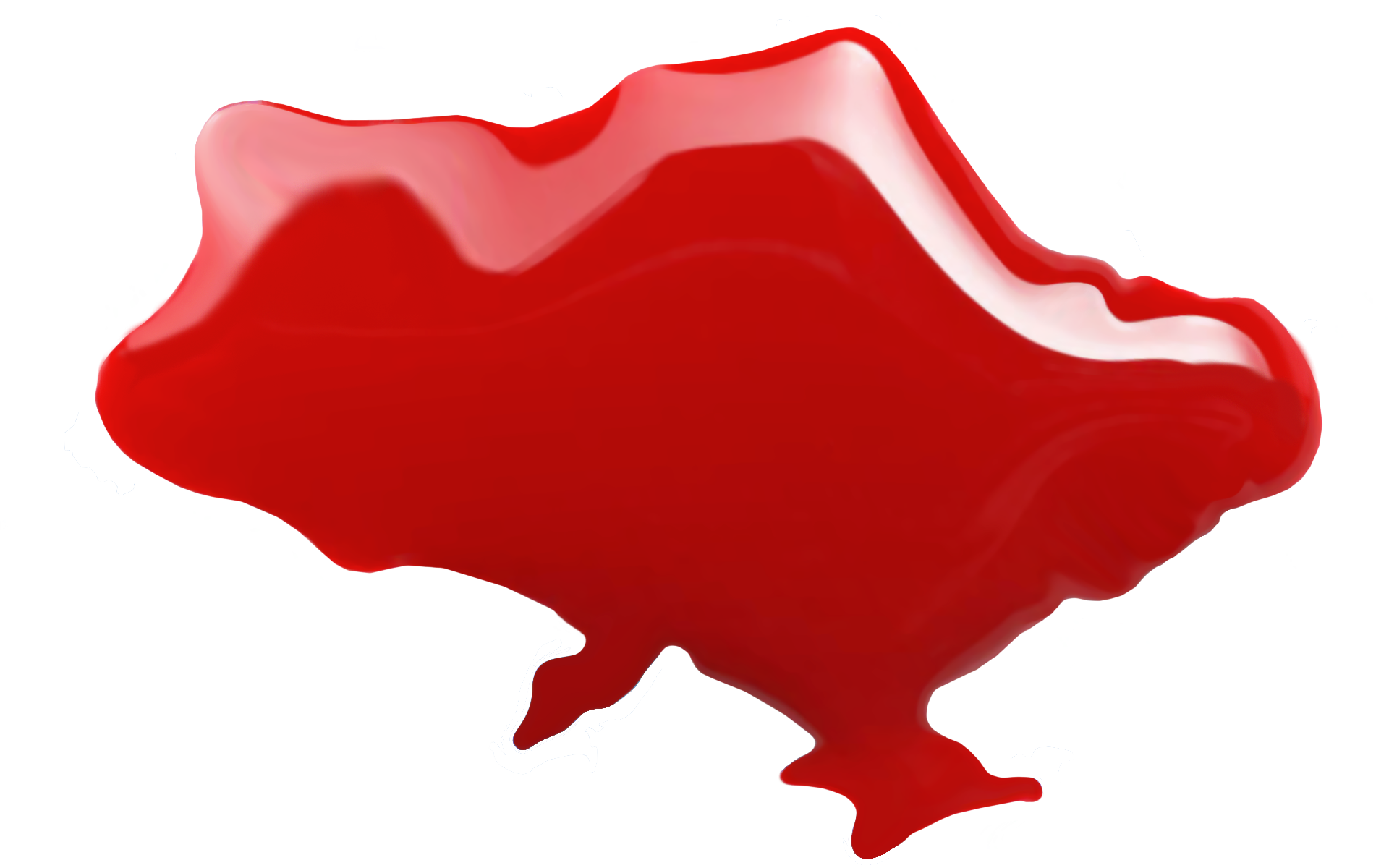
OCCUPATION
Losses of Ukraine during World War II
caused by the Nazi and the communists
In January 1945, Saturday Evening Post reporter Edgar Snow published a story during his trip to Ukraine. In particular, he wrote that the war, which some tend to call "Russian glory," should be "justly recognized as primarily the Ukrainian war… Cities, industry, agriculture, and the people of no other European country have suffered such severe devastation."
June 22, 1941 is the day of the beginning of the Nazi occupation for Ukraine. It was exactly 80 years ago.
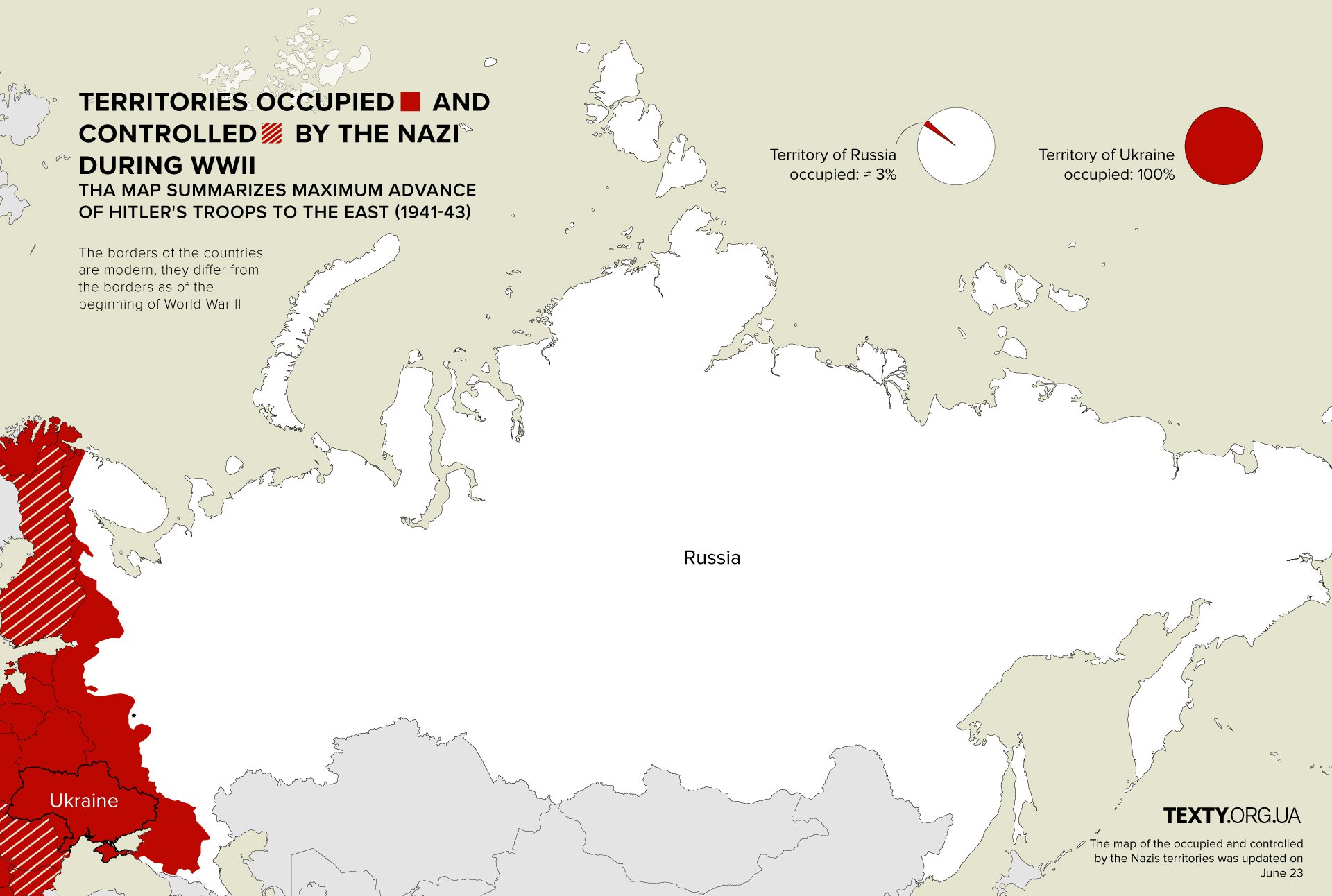
Total losses of the USSR
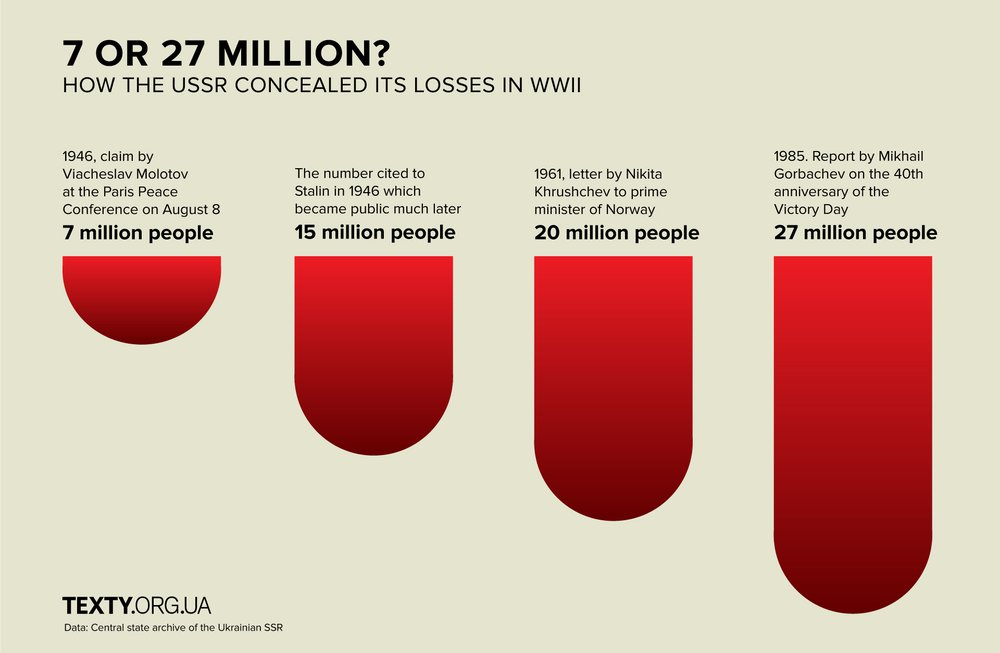
Losses of Ukraine, over 10 million people
Only 55 years after the end of the war, in the process of preparing the all-Ukrainian "Book of Memory" as a result of hard work in the archives, it was established that the irreparable military losses of Ukraine amounted to 4.1 million people.
More than 5.7 million people (4.148 million civilians and 1.571 million prisoners of war) died in Nazi-occupied Ukraine. Among the dead were 1.5 million Jews.
2.4 million Ukrainians were forcefully deported from Ukraine.
400 to 450 thousand of them died.
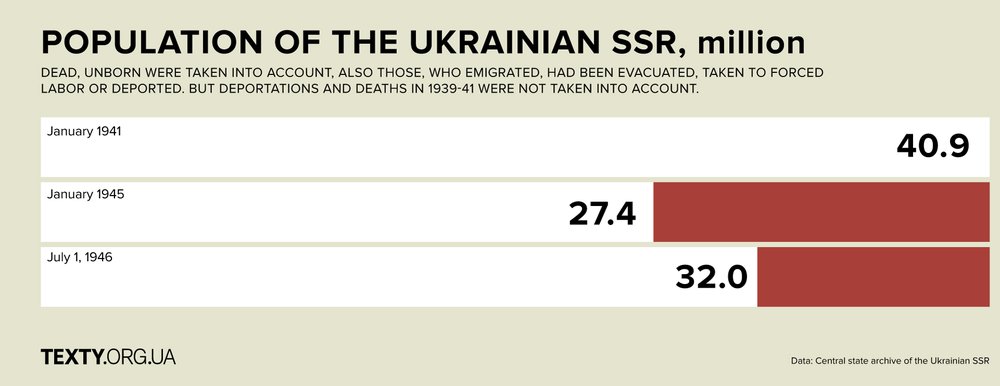
The population of Ukraine within its current borders was 42.9 million people as of January 1, 1941 (including the Crimea and parts of the western regions, which were then parts of other states). Ukraine managed to restore this number only in 1960. This is one of the most catastrophic consequences of the war.
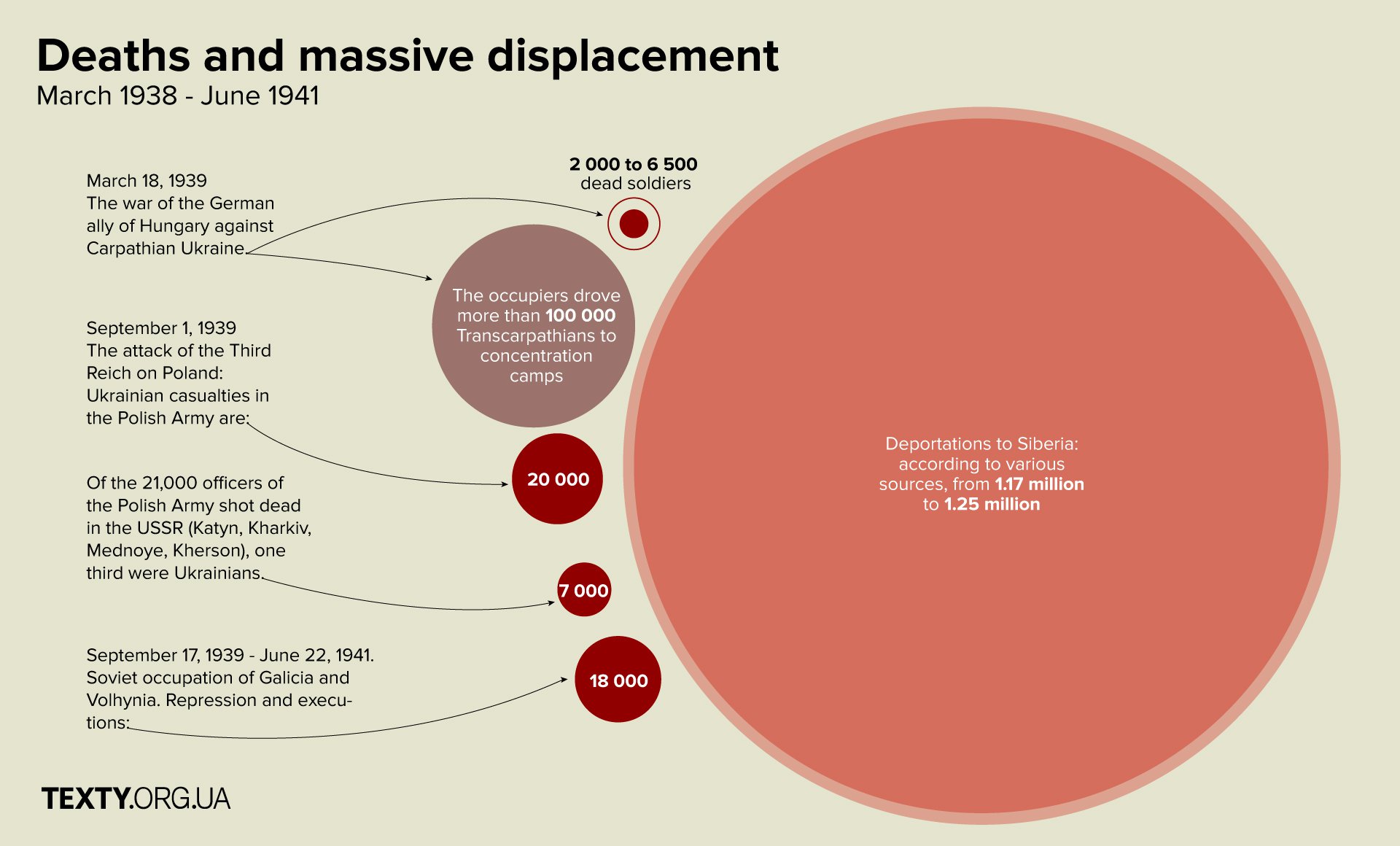
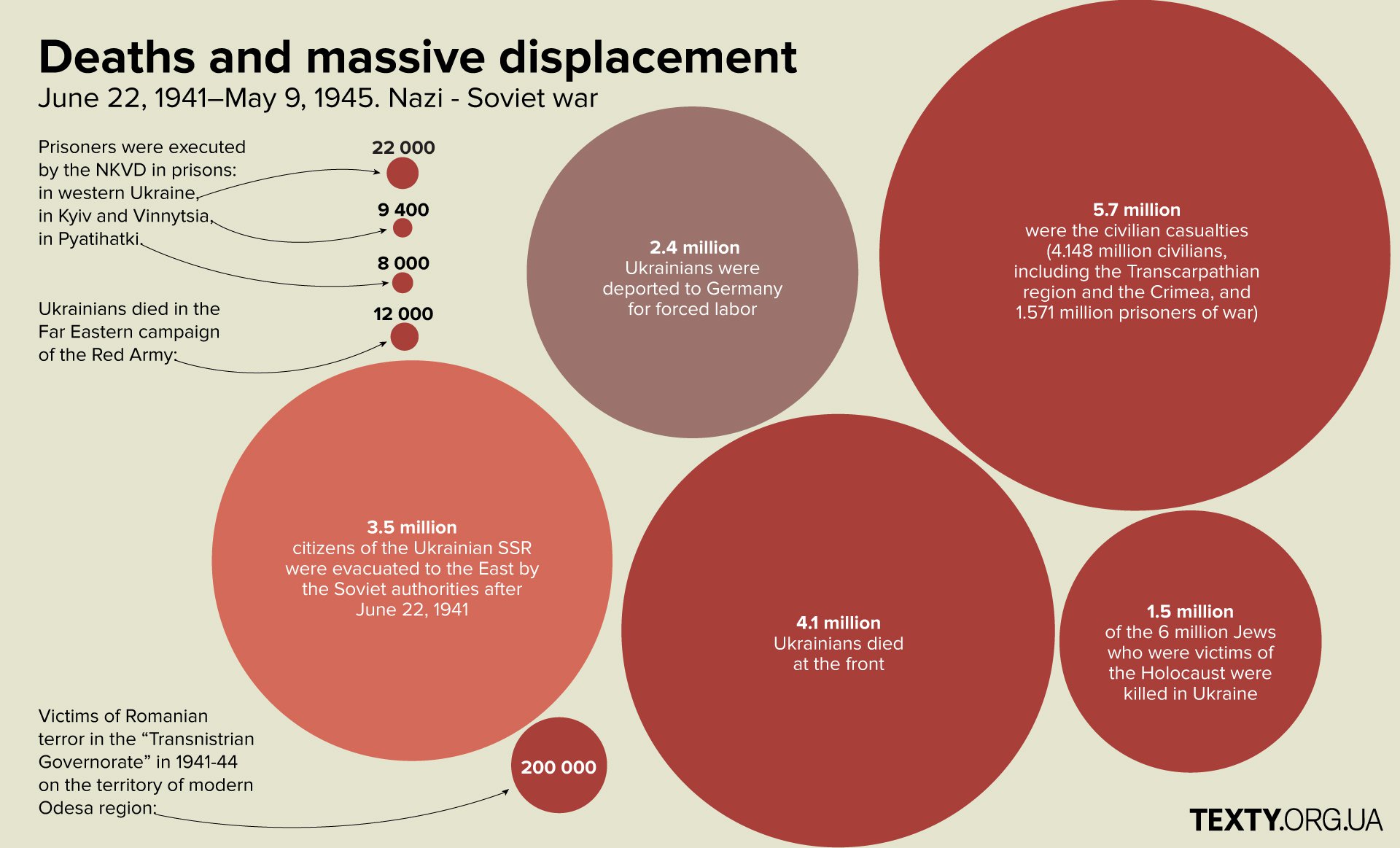
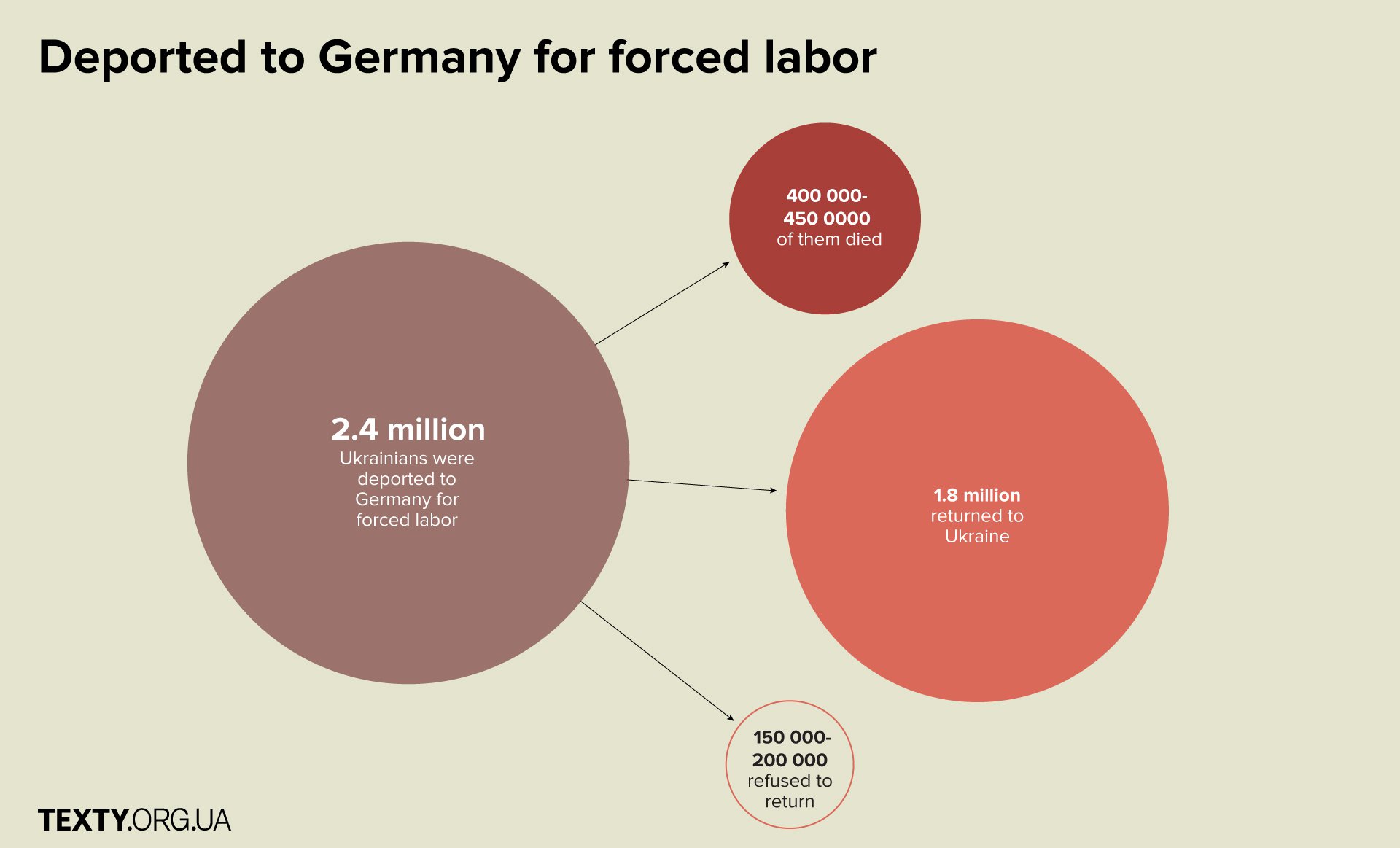
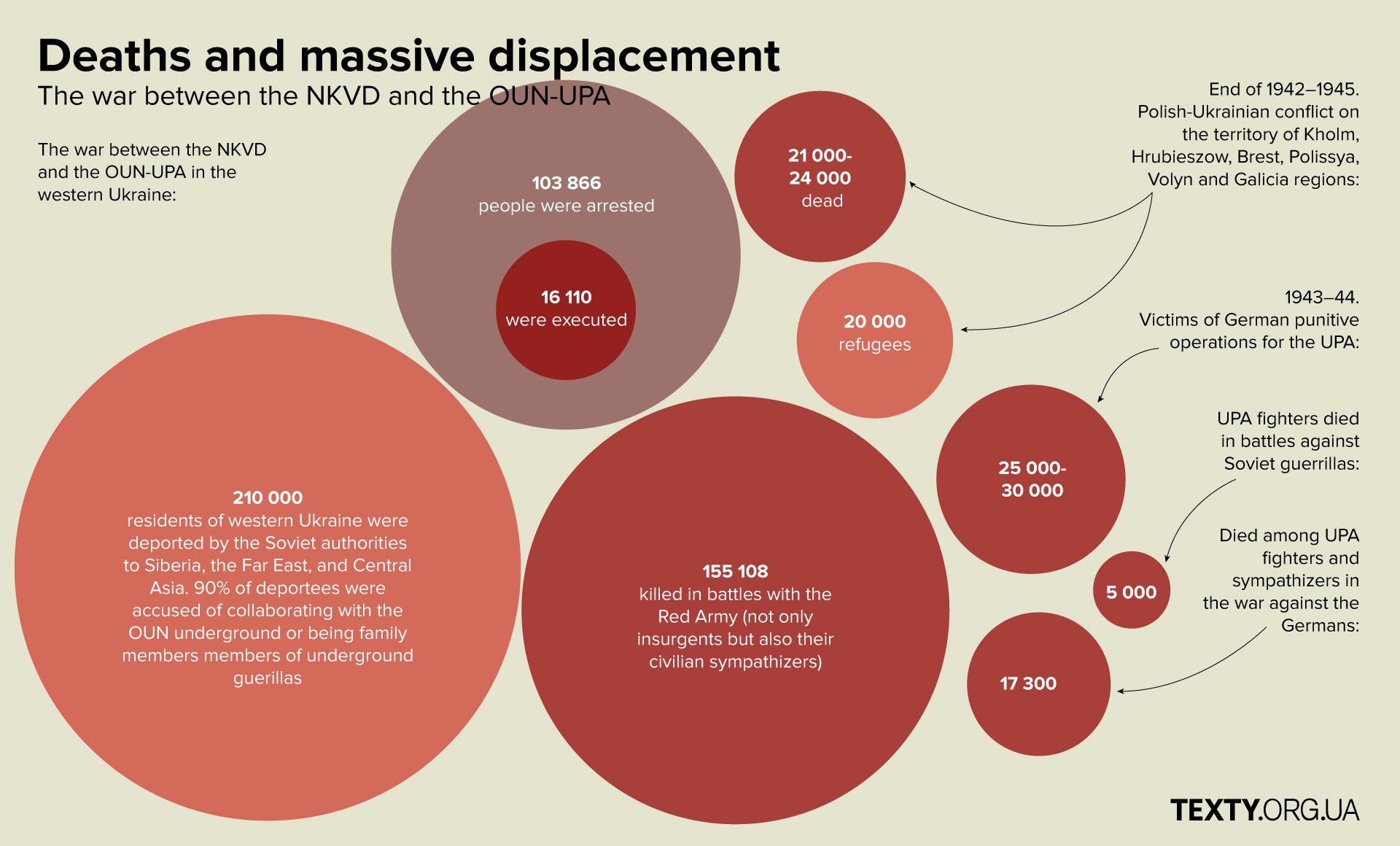
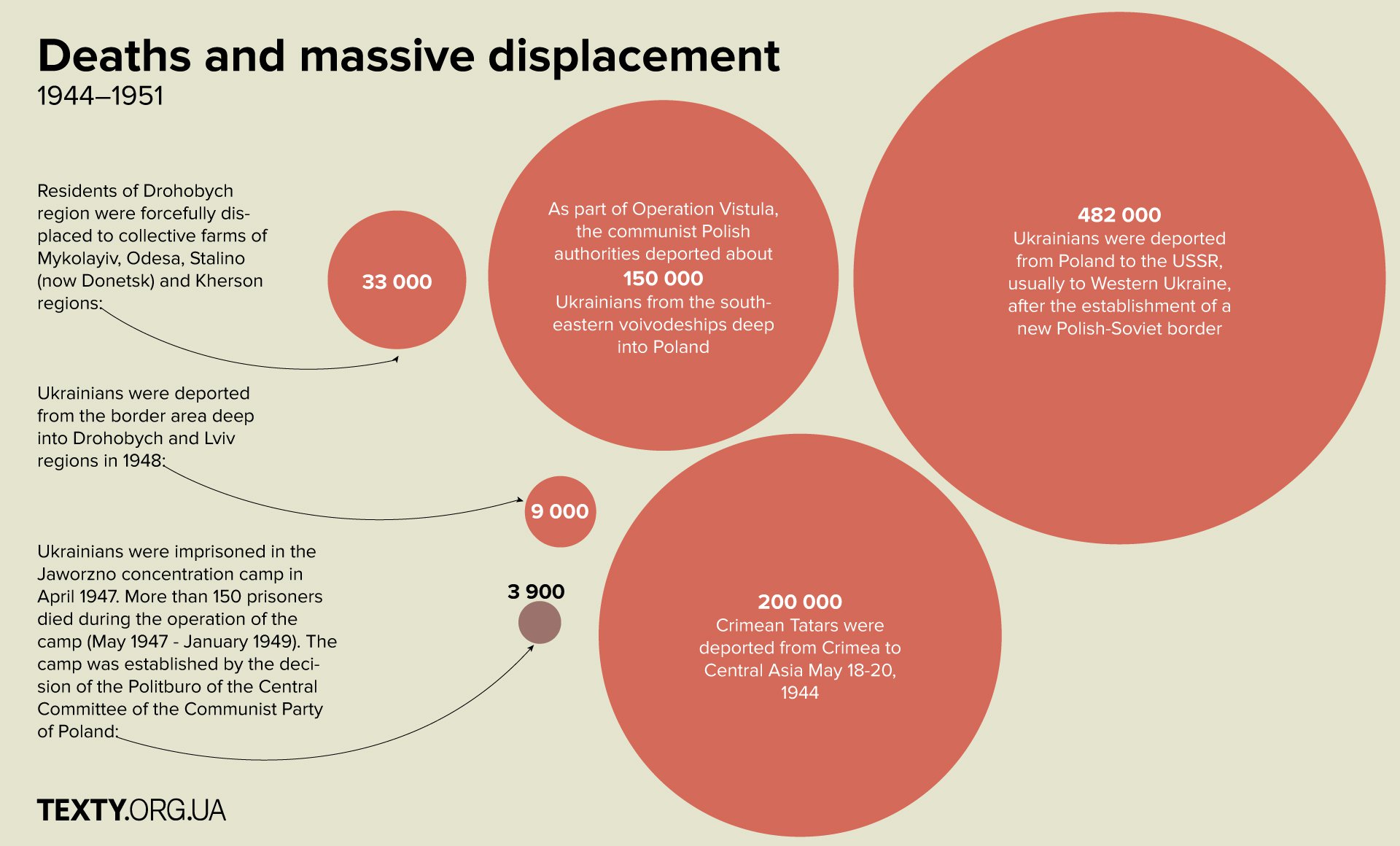
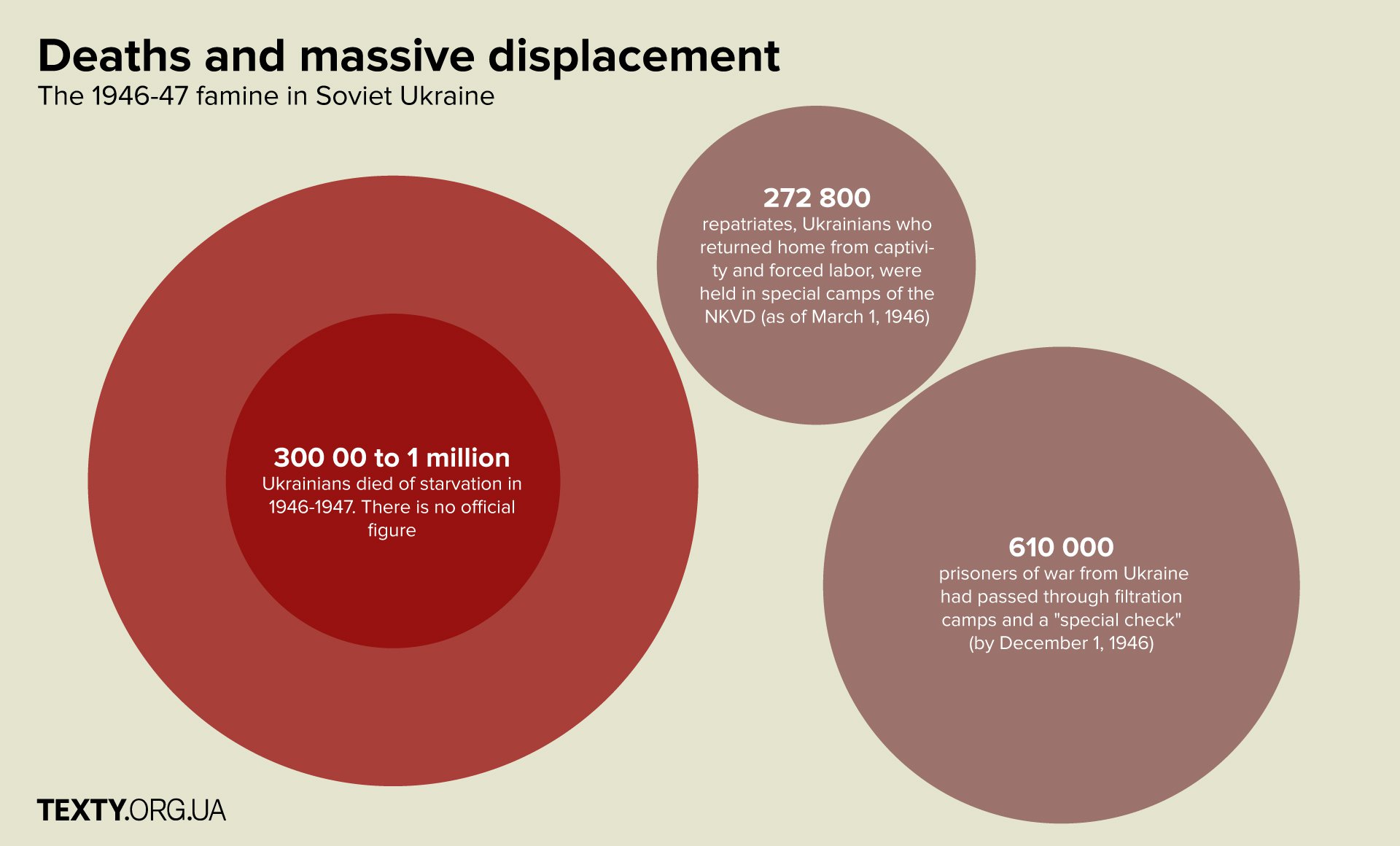
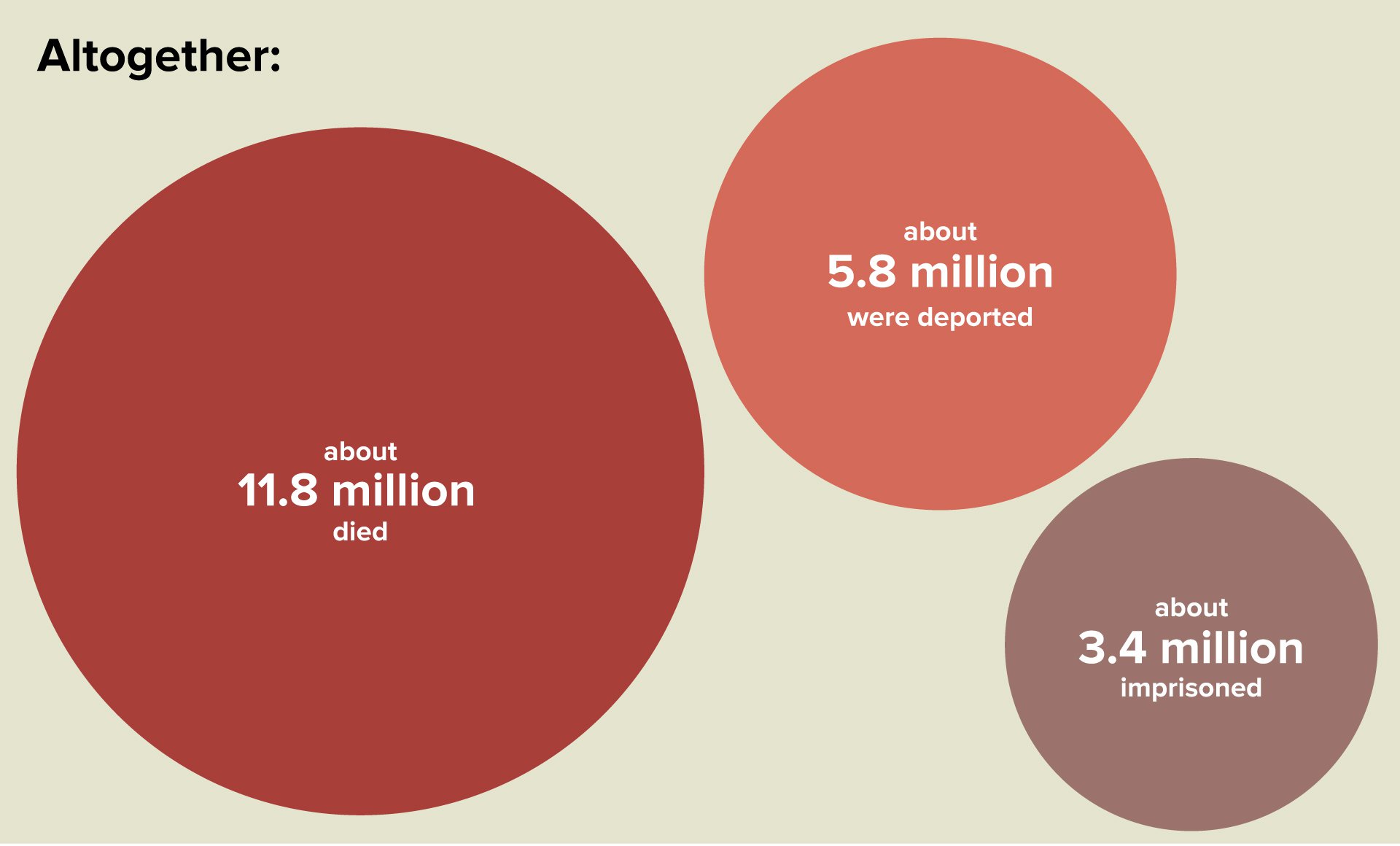
The 1946-47 famine in Soviet Ukraine
In the second half of 1946, the Ukrainian countryside began to experience famine, which was preceded by a catastrophic drought. Famine also broke out in other regions of the then USSR.
However, at this time Moscow exported grain to Bulgaria, Romania, Poland, and Czechoslovakia. In April 1946, an agreement was signed to supply France with 500 thousand tons of grain. Deliveries were made at prices undercutting world prices, and mainly on credit.
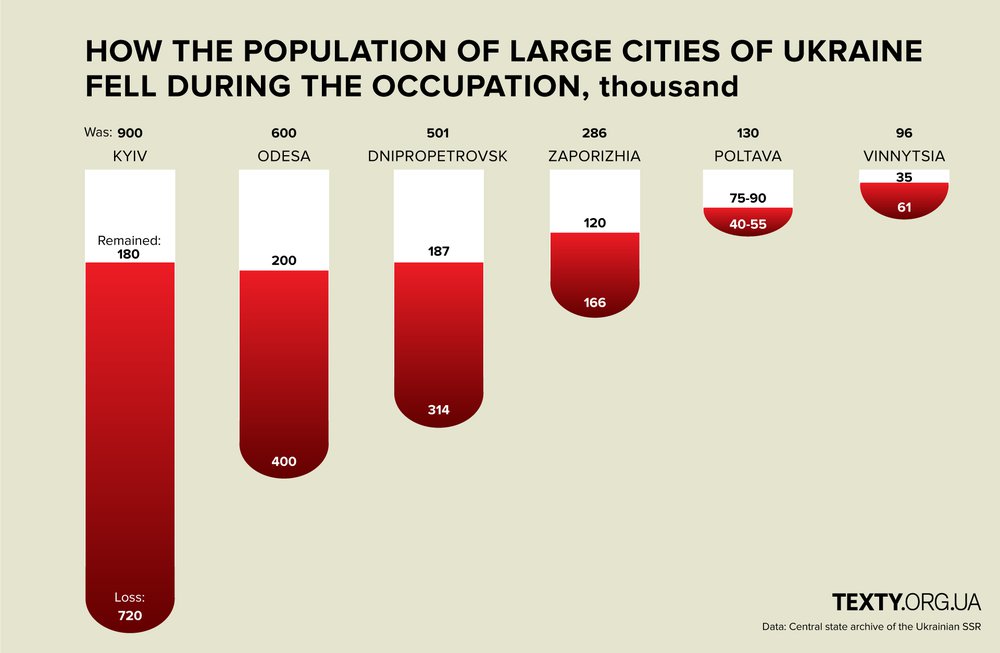
Hungry cities
Hundreds of thousands of residents of Ukrainian cities died of starvation: mass deaths are known to have happened in Kyiv, Dnipropetrovsk, Vinnytsia, Zaporizhia, and Sumy. In no city was the population covered by the "planned supply". Peasants were also often barred from selling food to city dwellers, and city dwellers were not allowed to enter villages in search of food.
In 1943-44, typhus, intestinal and venereal diseases, and childhood infections raged in Ukraine. At the end of 1943, 158 thousand cases of typhus, typhoid fever, recurrent typhus and dysentery were officially registered in the regions of Ukraine occupied by the Red Army. Scabies was a common contagious disease in German-occupied areas, affecting at different times 23% to 63% of the population.
Children and adolescents suffered from dystrophy, rickets, scurvy, tuberculosis, measles, dysentery, and scarlet fever.
Depriving Ukrainians of medical care was a Nazi policy aimed at reducing the local population.
Offensive operations on the territory of Ukraine lasted 680 days. At least 3.5 million Soviet soldiers were killed and wounded.
40% of the material losses of the USSR in World War II were the losses of Ukraine that comprised 285 billion rubles, which was then equivalent to 100 billion dollars.
700 cities and 28 thousand villages were destroyed in Ukraine.
45.1% of the housing facilities were destroyed or made uninhabitable.
1.8 million houses in villages were destroyed
10 million people were left homeless after the war.
Also destroyed:
5.6 thousand bridges
1,916 railway stations
33 thousand educational institutions
16 thousand enterprises
18 thousand medical facilities.
19.2 thousand libraries
550 of the best enterprises were evacuated from Ukraine to Russia, but were not returned after the war.
Losses of communal facilities:
Water pipes 87.6%,
Sewerage 88.6%,
Wastewater treatment plants 87.3%,
Power plants 88.2%,
Gas pipes 80.0%.
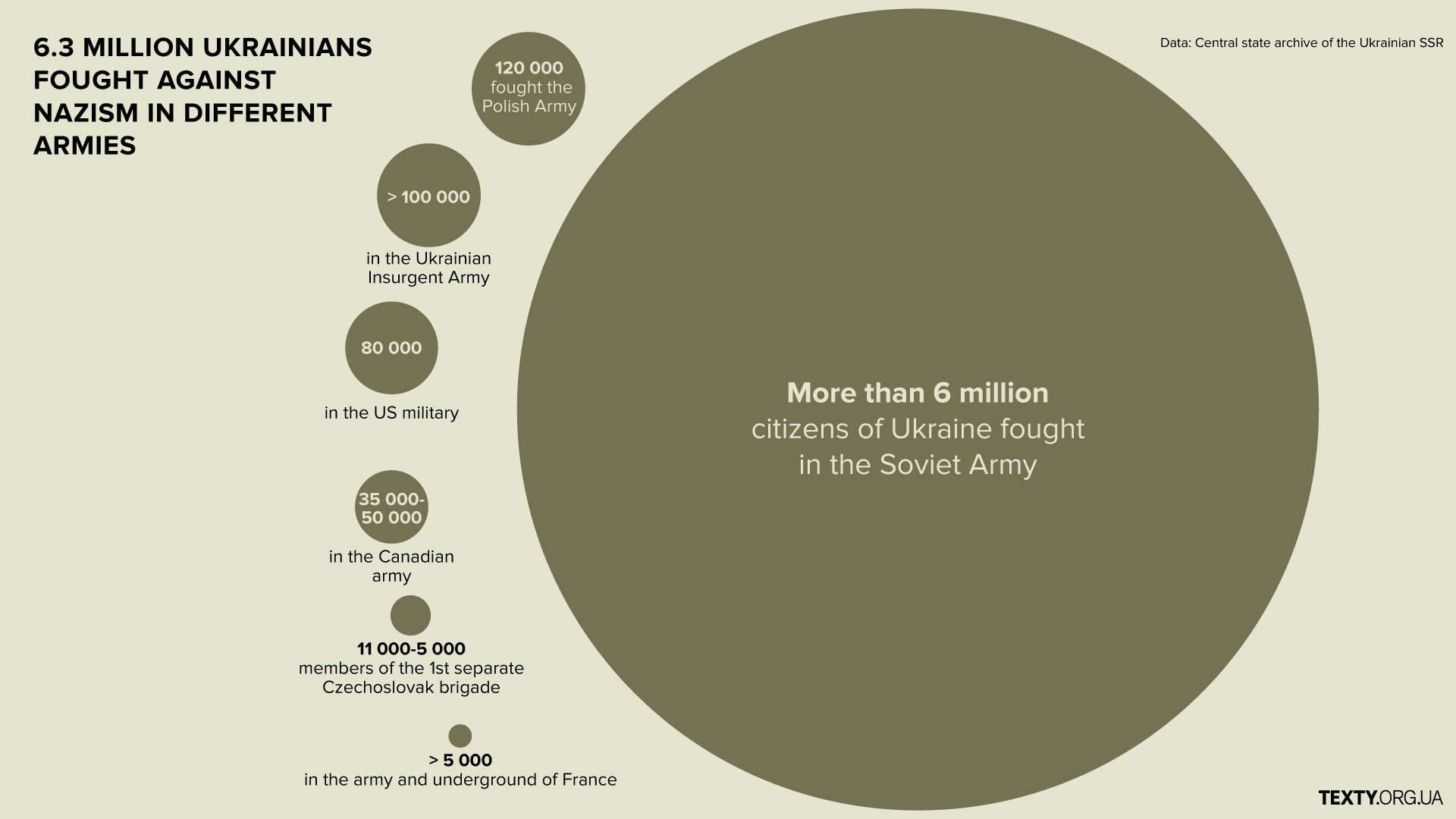
The war for Ukrainian resources
Ukraine was a key part of Hitler's Der Hungerplan, which provided for the starvation of the inhabitants of the occupied territories of the USSR in order to obtain additional food for German troops and the German population.
Crops, tractors, and livestock were being rescued
In parallel with the harvest, agricultural machinery and livestock were evacuated from Ukrainian villages to Russia in 1941 and early 1942. Both tractors and cows covered a thousand and a half kilometers on their own.
The slogan of the evacuation of resources, which was simultaneous with the retreat of the Soviet Army: "Leave nothing to the enemy." The remaining collective farm machinery was taken out of order, crops and food were destroyed.
What was left was taken away by the occupiers
Millions of Ukrainian peasants remained under occupation with their meager food supplies, for which the German army had very big plans, as well as for the peasants themselves.
The scale of the looting of the peasants is evidenced by the figure: 11.6 million food parcels were sent home to Germany by German soldiers and officers from the Eastern Front from the beginning of the invasion until September 1941.
However, the occupatonists quickly realized that the robbery will not feed them for a long time, and so they began to establish a system of pumping resources and using labor force. Collective farms were also preserved, renamed into "state estates", peasants were forced to work 18-20 hours a day, evasion and resistance were punished. Peasants were beaten or killed, houses were burnt.
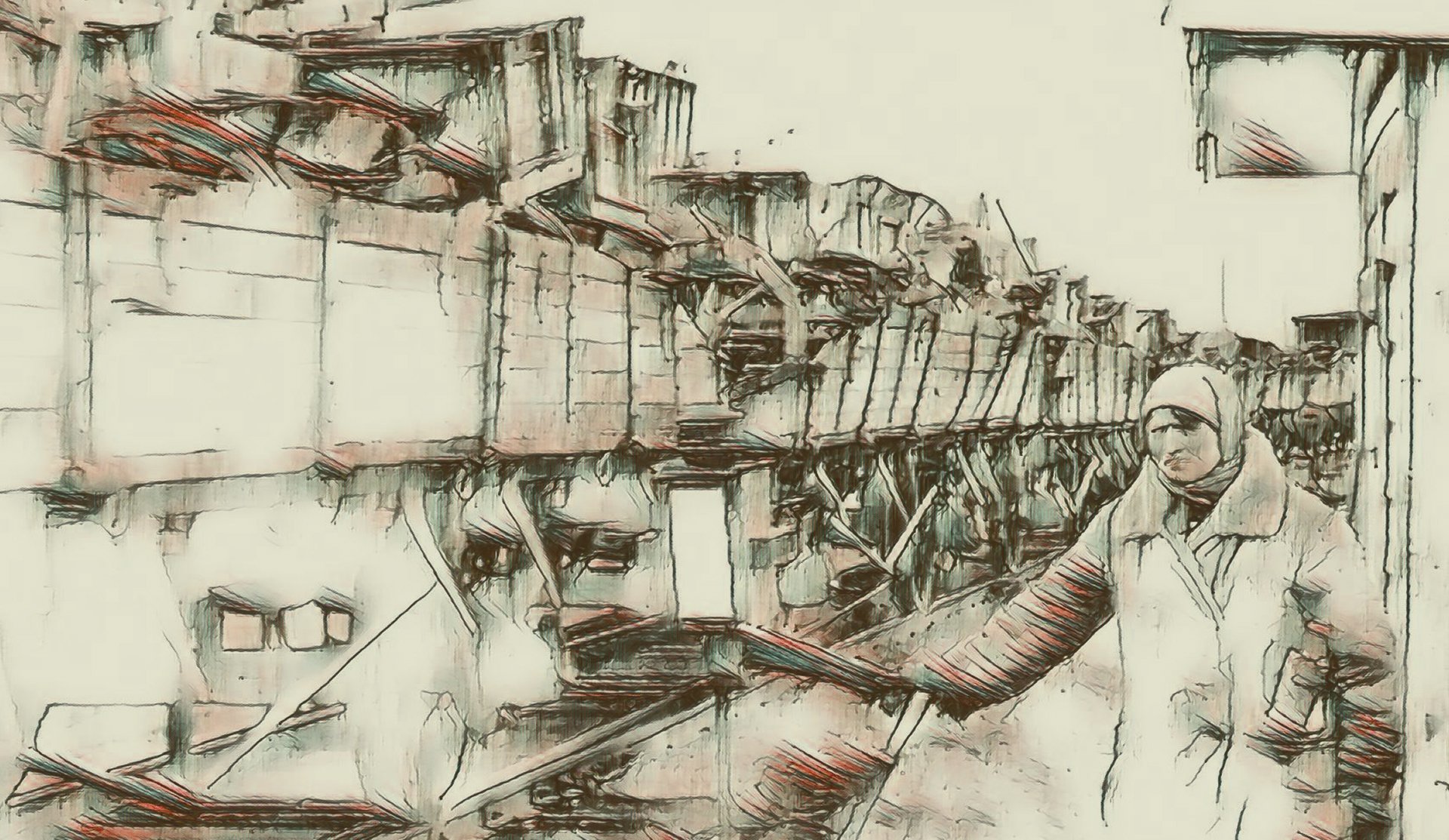
Hunger, fire, and destruction
In the second half of December 1941 and January 1942, troops and police confiscated all available stocks of bread from collective farms, state farms, and the population.
In 1942–1943, the villages of Kyiv, Vinnytsia, Zhytomyr, Sumy and other regions were hit by famine.
And in the autumn of 1943, the Germans forbade the peasants to sow winter crops, because they understood that they would not have anything from the next harvest.
According to the secret directive of Reichsmarschall Hermann Wilhelm Göring of September 7, 1943, during the retreat, the Nazis were to destroy the agricultural base, remove all machinery and crops, and evacuate the workers.
During this period, 56,972 tractors, 24,556 combines, 33,038 drills, 16,988 threshers, 45,688 plows, 6,479 engines, 5,092 trucks and other agricultural machinery and equipment were moved from Ukraine to Germany or destroyed. Even carts and sledges were taken out, a total of 1.2 million units.
Massacre of peasants. Destroyed villages
During the German occupation of Ukraine, more than 1,370 settlements were destroyed. At least 50 thousand people have fallen victim to such punitive operations, according to the authors of the annotated Burnt Villages index (Ukrainian Institute of National Remembrance, 2012).
The destruction of Ukrainian villages and their inhabitants was part of the Generalplan Ost, the strategy of extermination and enslavement of the Slavic peoples pursued by the Third Reich.
The most famous story that demonstrated the implementation of this plan was the Koryukivka tragedy, which is not about a village, but a town where on March 1-2, 1943 the occupiers shot 6.7 thousand locals and burned 1,290 houses.
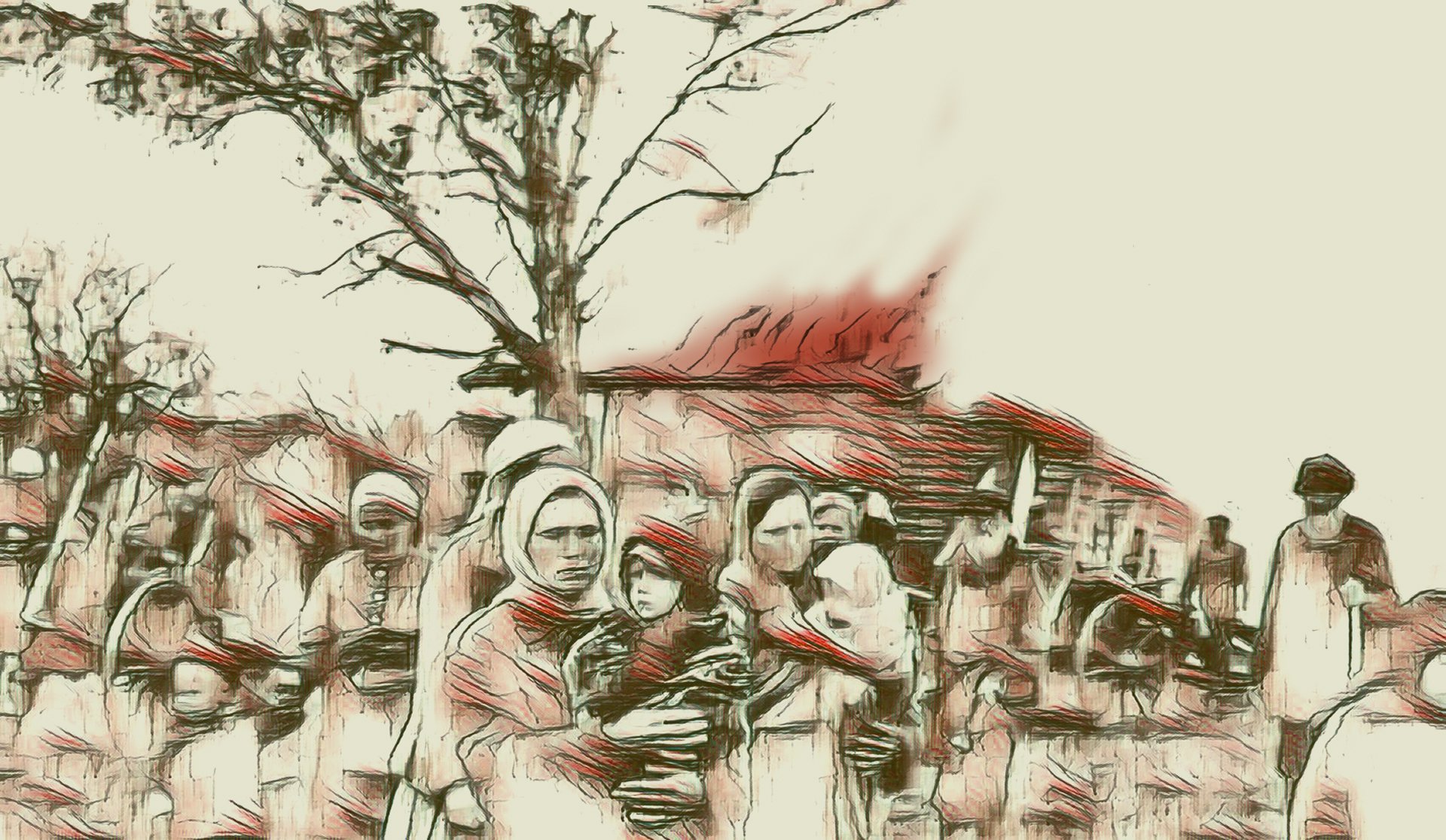
It was the largest settlement in Europe completely destroyed by the Nazis as part of a punitive operation during World War II, although in Soviet times this fact was ignored. Until the 2000s, there was not even a monument. One of the reasons for the silence was that the reason for the punitive action was the attack on the German garrison in Koryukivka by Soviet partisans. During the massacre, the guerrilla unit, numerically larger than the punishers, remained in the woods, passively watching the actions of the enemy.
Instead, the Belarusian village of Khatyn was chosen as a symbol of the villages burned by the Nazis, where 150 residents were burned, and after the war a huge memorial was built to which tourists were transported en masse. Thus, the Soviet authorities tried to level their own crime committed in an area with a very similar name, Katyn, the place of the mass murder of Polish citizens in 1940. Ironically, this huge mass grave was found near Smolensk by the German occupationists.
Hundreds of camps and ghettos in occupied Ukraine
It is impossible to calculate exactly how many Ukrainians were killed and died in Nazi camps, as such prisoners were not counted as Ukrainians but as Soviet, Polish, or Hungarian citizens.
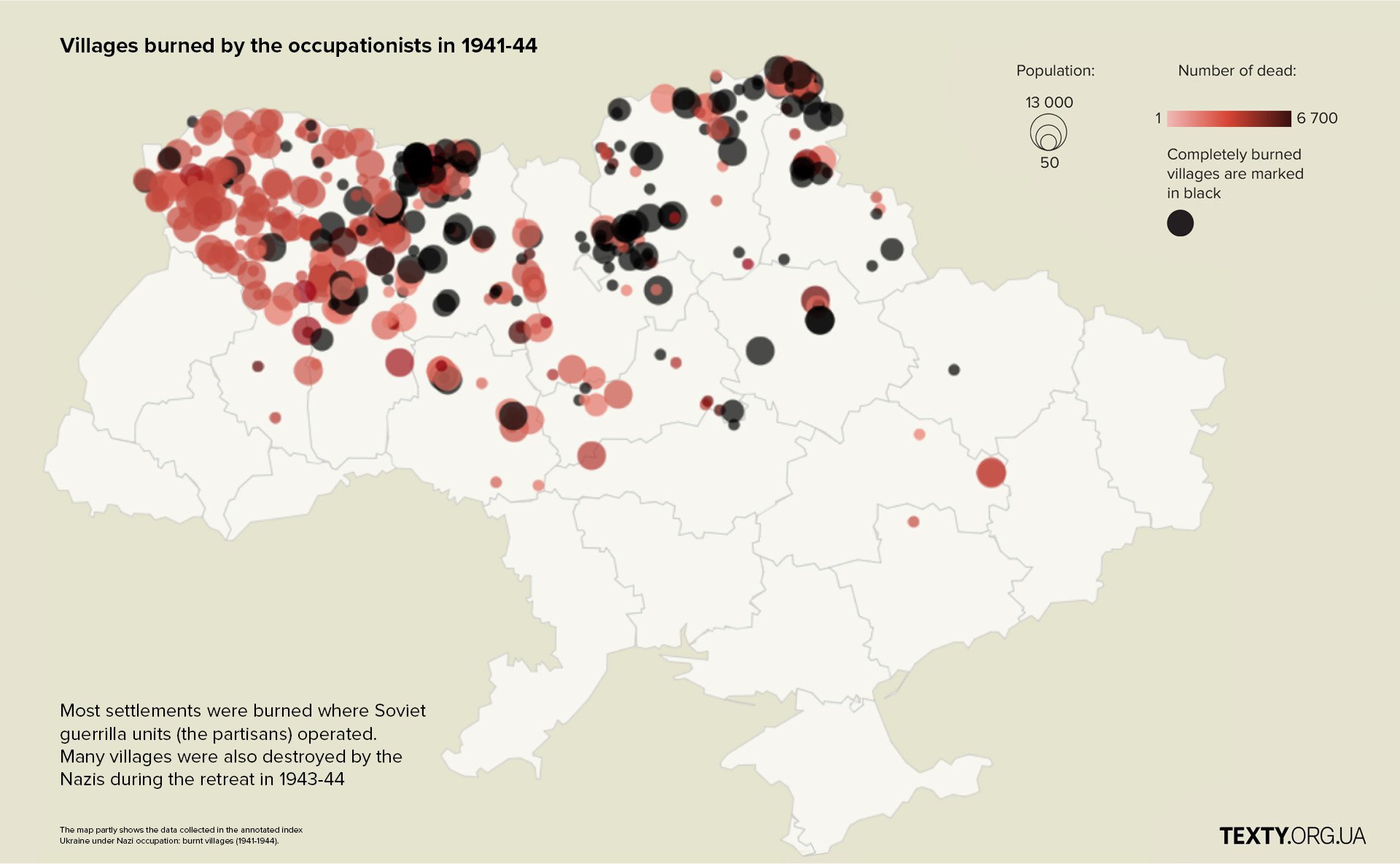
Ukraine under Nazi occupation: burnt villages (1941-1944). Download data.
The map partly shows the data collected in the annotated index Ukraine under Nazi occupation: burnt villages. (1941–1944)
During 1941-44, the Nazis also set up 78 forced labor camps for Jews, some of which were located directly in the ghettos (there were 304 ghettos in Ukraine). There were also 7 correctional labor camps, 15 forced labor camps and 23 deportation camps, 66 Gestapo prisons.
The camps in the occupied eastern territories were the most brutal, as also recognized by German researchers. In all camps on the territory of occupied Ukraine, there was a high mortality rate, famine, lack of medical care, torture, abuse of prisoners, and mass extermination.
Camps, prisons, and ghettos in occupied Ukraine
Prisoners — both civilians and POWs — were forced to hard work, starved, killed
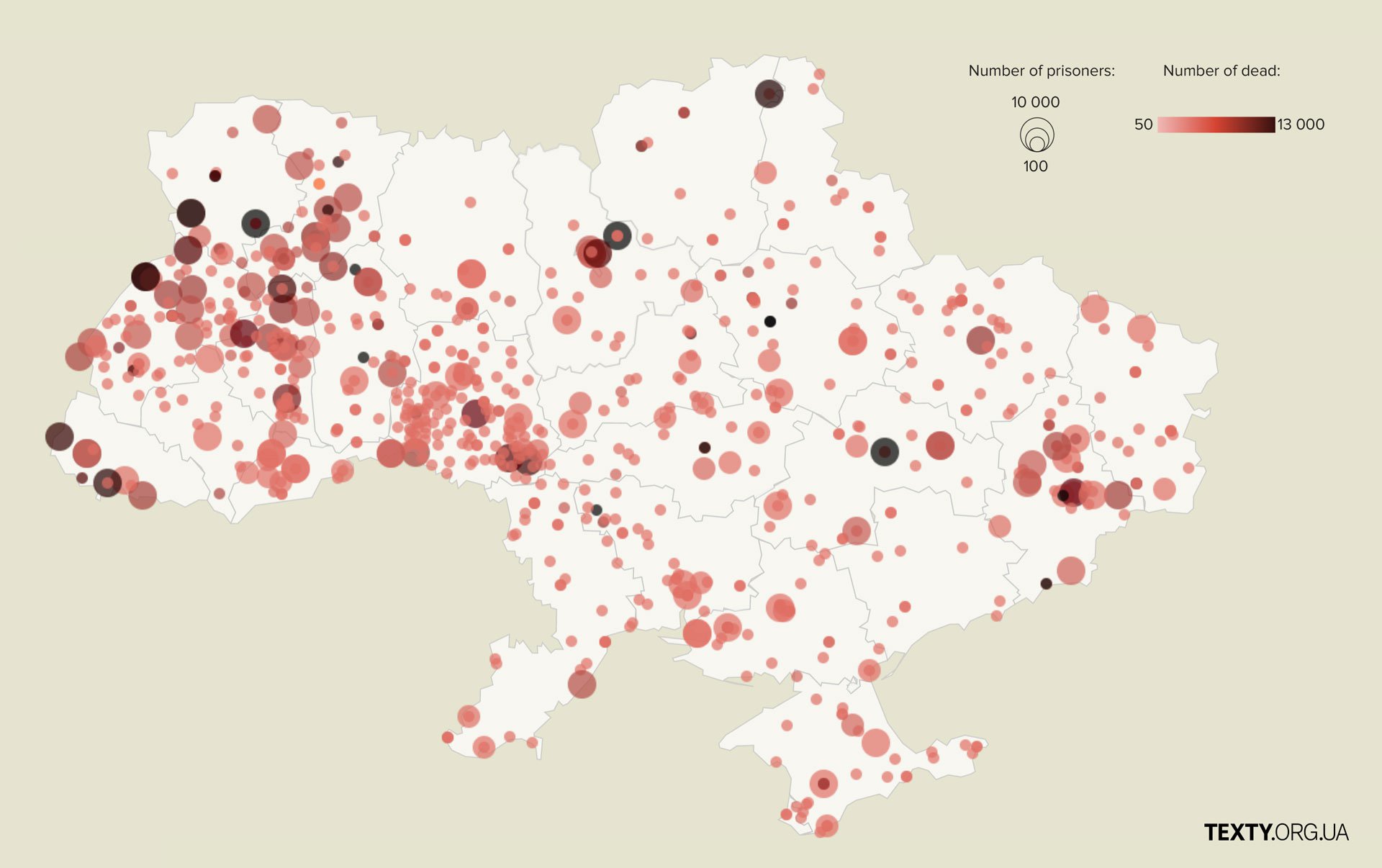
Resourse on Camps, Prisons and Ghettos in the Occupied Territory of Ukraine (1941-1944). Download data.
Ostarbeiters
48% of Ostarbeiters from the USSR were from Ukraine
Between 1941 and 1944, 2,402,234 people were deported from Ukraine (meaning the territory within Ukraine’s current borders).
Sources of information:
- Hitler, Stalin, and Ukraine: ruthless strategies. Yuri Shapoval, 2020
- World War II: the Ukrainian context. Yuri Shapoval, 2015
- Ukraine in the years of World War II: an attempt of a new conceptual view. Ivan Patryliak, Mykola Borovyk, 2010
- Ukrainian World War II 1939-1945 the project of Ukrainian Institute of National Remembrance
- Demographic losses of Ukraine during World War II, Oleksandr Lysenko, Oleksandr Perekhrest, 2015.
- Agriculture of Ukraine during the Great Patriotic War (1941–1945), 2010
- Ukraine under Nazi occupation: burnt villages. (1941–1944) Annotated index
- Holodomor Institute
- Encyclopaedia of the history of Ukraine
- Ukrainian historical journal
- Postwar repression against the military(1944-1953 рр.), Serhiy Vasylenko
- Ukrainian factor in World War II, Oleksandr Perekhrest.
- Memorial Museum of Totalitarian Regimes "Territory of Terror"
- Resourse on camps, prisons and ghettos in the occupied territory of Ukraine (1941-1944).. State Committee of Archives of Ukraine; Ukrainian National Foundation for Mutual Understanding and Reconciliation.
- Ukraine in World War II, brochure of the Ukrainian Institute of National Remembrance.
- Liberation Movement Research Center.
- Bloodlands: Europe Between Hitler and Stalin. Timothy D. Snyder

